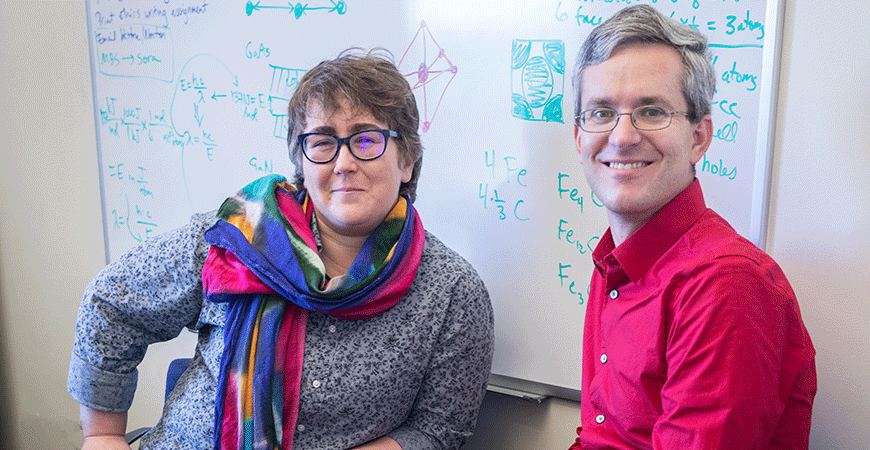
Imagine exploring the cores of stars to understand — and ultimately control — the type of fusion that’s taking place.
High-energy density (HED) science is the study of properties and behavior of matter and radiation in extreme temperatures and pressures common to the deep interiors of the largest planets. It’s also the foundation of understanding fusion energy and high-energy astrophysical phenomena, and it’s happening at Lawrence Livermore National Laboratory, just 75 miles from UC Merced.
HED science is the focus of a partnership designed to strengthen connections with national labs, widen career paths for students and diversify the research community.
A new three-year grant from the U.S. Department of Energy's National Nuclear Security Administration’s Minority Serving Institution Partnership Program is funding UC Merced and three partners — Livermore Lab, Morehouse College and Florida A&M University — in forming the Consortium for High Energy Density Science.
The consortium’s mission is to enhance computational study of the electronic structure of materials under extreme conditions and to train students in this field, in part by bringing students into the lab to participate in the research happening there.
“They are in a huge facility working to deliver energy to something the size of the pupil of your eye,” said Professor Aurora Pribram-Jones, with the Department of Chemistry and Chemical Biology. “This is Big Science — the creation of a star in a lab on Earth.”
Physics Professor David Strubbe, with the Department of Physics, and Pribram-Jones are UC Merced’s principal investigators and are excited to introduce students to this rapidly developing scientific field.
HED science is a multidisciplinary area that provides a foundation for understanding a wide variety of astrophysical observations. At Lawrence Livermore Lab, some of the researchers are studying topics such as inertial confinement fusion — a possible future source of renewable energy — and how celestial bodies transition from being planets to brown dwarfs. Both processes involve HED science.
“It’s a chance to study what’s happening inside planets and stars under the controlled circumstances of a lab,” Pribram-Jones said. “It’s a very creative field, because traditional theories don’t always work — it means you have to think differently about nearly everything. Labs will be looking for people with different ideas, perspectives and problem-solving skills.”
“Our students will get access to amazing state-of-the-art knowledge and experience.”
Over the next three years, UC Merced receives about $910,000 to fund research positions, buy equipment and offer classes, lectures, seminars, visits to labs and partner institutions and other special activities. There’s also a speaker series designed to drive more interaction between the university and the lab. On campus, students will conduct computational simulations and devise new theoretical approaches to help understand what is going on in experiments, which are extremely difficult and expensive, the professors said.
This is a unique opportunity to expand the pool of HED researchers, which is a small, close-knit community, and to open up networks between students and staff at Livermore Lab and the other consortium partners.
“Our students will get access to amazing state-of-the-art knowledge and experience,” Strubbe said.
He has been involved in a number of outreach efforts including Dinner with a Scientist, an annual event designed to expose younger students from the community to the wonders of science and get them thinking about the different career doors science studies can open for them. He also works with undergraduate students who are interested in advanced physics degrees, and said his involvement with the students piqued his interest in being part of this grant.
Both professors are with the School of Natural Sciences, and both said they are looking for opportunities to recruit undergraduate and graduate students, and Strubbe said a robust relationship with Livermore Lab also gives San Joaquin Valley students an added incentive to choose UC Merced.
“The lab is so close to Merced, and that’s a great advantage for students — one the campus is trying to optimize,” he said. “There are more opportunities than we have been taking advantage of.”
“This consortium offers a way to better train the next generation of scientists and engineers across an array of topics, techniques and motivations around scientific work,” Pribram-Jones said. “Our students are a part of both the university’s and the national lab’s communities, and we’re excited to help facilitate increased access to those opportunities.”



